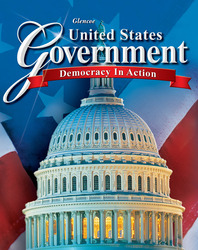United States Government: Democracy in ActionChapter 17:
Elections and VotingStudent Web Activity Lesson PlansIntroduction
The United States Department of Justice notes: "The Voting Rights Act, adopted initially in 1965 and extended in 1970, 1975, and 1982, is generally considered the most successful piece of civil rights legislation ever adopted by the United States Congress. The Act codifies and effectuates the 15th Amendment's permanent guarantee that, throughout the nation, no person shall be denied the right to vote on account of race or color." In this activity, students will learn about voter disenfranchisement before the Voting Rights Act of 1965 was passed, and how voter registration changed after it was passed. Lesson Description
Students will explore the Department of Justice Web site about federal voting rights law, and answer four questions. Students will then make a poster that encourages citizens to vote. Instructional Objectives
- Learners will trace what happened to African American voting rights at the end of Reconstruction.
- Learners will summarize the provisions of the Civil Rights Act of 1965.
- Learners will analyze a chart of voter registration rates before and after the Civil Rights Act of 1965 was passed.
|
Student Web Activity Answers
- Section 4 ended the use of literacy requirements for voting in six Southern states.
- Under the terms of Section 5, no voting changes could be made until approved either by a three-judge court in the District of Columbia or by the Attorney General of the United States. Federal voting examiners were appointed to ensure that legally qualified persons were free to register for federal, state, and local elections, and federal observers were assigned to oversee the conduct of elections.
- They gerrymandered election districts to reduce black voting strength and minimize the number of black elected officials. They also used poll taxes, literacy tests, vouchers of "good character," and disqualification for "crimes of moral turpitude." Other laws and practices, such as the "white primary," attempted to evade the 15th Amendment by allowing "private" political parties to conduct elections and establish qualifications for their members.
- In 1965, the African American voter registration rate in Mississippi was 6.7 percent. In 1988, it was 74.2 percent.
- Students' posters will vary. Information provided should include where to obtain and complete voter registration forms, and the importance of doing so.
|
 | 




